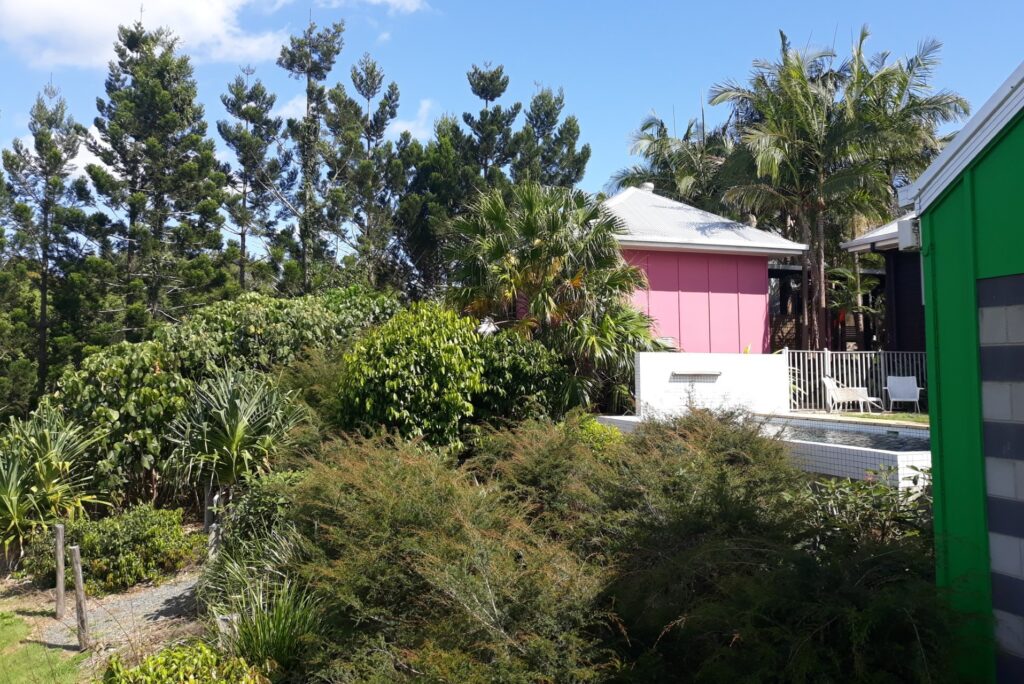 As well as being fundamental to biodiversity and climate health of the planet, native gardens can be beautiful. All the popular garden styles of ‘formal’, ‘cottage’ and ‘Australian Contemporary’ can be achieved using native plants. The design process begins with understanding your site and doing a functional analysis of it, setting a design vision, exploring native plants as part of the design fabric and the design resolution.
As well as being fundamental to biodiversity and climate health of the planet, native gardens can be beautiful. All the popular garden styles of ‘formal’, ‘cottage’ and ‘Australian Contemporary’ can be achieved using native plants. The design process begins with understanding your site and doing a functional analysis of it, setting a design vision, exploring native plants as part of the design fabric and the design resolution.
1. What is a garden and how does it differ from nature?
Gardens have been defined as the ‘manipulation of nature for human joy’. Different styles of gardens include:
- Formal
- Cottage
- Australian Bush Gardens
- Australian Contemporary
- Avante Garde
You can have any style of garden and still achieve a wildlife haven through clever design and plant choice.
2. Understanding your site, functional analysis and setting a design vision.
What makes good gardens:
- Excellent understanding of site
- Meets functional requirements
- Vision
- Discipline
- Emotion and aesthetics
3. Understanding your site is known as site analysis. Make notes or draw up a plan.
Site Analysis
Soil
- Poor quality or good quality
- Sandy soils drain well
- Clay soil retains moisture
Aspect
Winter:
- North is good for winter sun
- Southwest is terrible for cold winter breezes
- South is shady
Summer
- Southeast is terrible hot morning sun
- Southwest is terrible for hot summer afternoon sun
- Southeast is good for afternoon summer breezes
Topography
- Is your site gently sloping?
- Is your site steep?
- Is there a gully or drain?
- Is there a boggy area?
Privacy
- Is the site overlooked?
Views
- Are there good views?
- Are there bad views?
- Can you borrow landscape?
Vegetation
- Are there good trees and shrubs?
- Are there bad trees and shrubs?
Habitat
- Does any of the existing garden provide good wildlife habitat?
Threats
- Do you have steep slopes / landslip prone areas?
- Do you have erosion?
- Are you concerned for bushfires?
4. What do you need from your garden – the practical things?
Functional Analysis
Problems
- Problems on the site that need to be resolved
Water Supply
- Water supply for irrigation
Cars
- Areas needed for cars or other vehicles
Pedestrians
- Pedestrian access needed
Access
- For maintenance
- For less able / disabled
Maintenance
- Your maintenance abilities – be realistic
Users
- Who will be using the space and what are their needs?
Production
- Do you want a productive garden with fruit and vegetables?
Services
- Where are electricity and water lines, solar panels, sewage etc.?
5. Setting a Design Vision.
Now you understand your site and functional needs it time to create a design vision. Using the vision to inform all your decisions is critical to a successful garden.
Sometimes, the simpler the vision, the better the outcome.
Examples:
“A place for my kids to play cricket and for lots of birds.”
“Somewhere I can sit under a shady tree and drink gin and tonic with my friends on a summer day.”
“A garden with year round flowers that I can cut for vases.”
6. Researching the Design Fabric.
This requires a lot of research and thought and will start you on the journey. Visit lots of gardens and websites and magazines.
Design Fabric
Soil
- Do you need to improve the soil?
Landform
- Do you need to shape land?
- Do you need retaining walls?
- Do you need drains?
Hard Surfaces
- Trafficable for vehicles/pedestrians
- Paving or concrete
- Permeable (rain penetration)
Soft Surfaces
- Lawns
- Garden Beds
- Edging details
Fencing and Screens
- Timber, Steel or Solid
Lighting
- Safety
- Evenings (particularly summer)
Choosing Plants
- Suitability for site and climate
- Size/Shape/Texture
- Flowers/Aroma
- Therapeutic values/Joy of wildlife
Budget
- What is your budget?
Construction
- What are you capable of building?
Sequencing
- Important things to do first?
7. Resolving the Design:
- Print a good base plan. Online Council mapping systems are great!
- Use a series of bubbles on your plan and makes notes.
- Overlap ideas and thoughts.
- Test your thoughts against your vision. This is the key to decision making.
- Refine and keep redrawing.
- Use your Site Analysis, Functional Analysis and Design Fabric as a reference checklist.
- The best gardens simply meet their brief and do it well – so be disciplined in sticking to your design vision!
8. Top Tips Achieving Natural Garden Beauty
The ‘Welcome’:
- Focus on your entry treatment – create one that makes you feel great every time you come home and motivates you to garden more, as well as being welcoming for visitors.
- Focus on a key place for you and visitors to enjoy the garden. Invest in comfortable and durable garden furniture that can sit outside all the time and be moved around as you wish.
Drama:
- Use the theatre of concealment and revelation.
- Use patterns of light shade.
Balance and Symmetry:
- Balanced composition provides symmetry and is not just about replication.
Views:
- Framing views with plants.
- Borrowing from adjacent landscapes.
- Make views picturesque with a foreground, middle ground and background.
Mass and Repetition:
- Bulk planting of drifts and nodes provides substance.
- Repetition brings out the best in native plants and strengthens their character and composition.
Foliage and Form Contrast:
- Place plants to maximise contrast of colour and form. A subtle plant next to a dramatic plant will accentuate each other’s attributes.
- Plant strata – layers of ground covers shrubs and trees, with vines overhead. Strata are vital to healthy wildlife gardens!
Senses:
- Plants that evoke memories.
- Plants that have flowers and aromas.
- Culinary plants including bushfoods.
- Plants that attract spectacular wildlife – the fifth dimension to Australian native gardens.
Climatic Comfort in the Sub Tropics – these four things will make a comfortable garden:
- For summer put a shade tree in the south-western corner to shade hot summer sun and block cold winter winds.
- For winter don’t plant trees to your north if you can avoid it.
- Place an entertaining space in the south-eastern corner for summer afternoons.
- Place an entertaining space in the north-western corner for winter afternoons.
Plan areas of deep shade with thick green groundcovers. When it’s hot and dry it will make the garden seem cool and lush.
Plant Health:
- Use of local native plants will ensure a healthy garden.
- Don’t plant regular symmetrical avenues and hedges. Monocultures are doomed to fail in this climate from disease and storms. Plant groves of trees and sweeps of shrubbery.
Details:
- Beautiful paths are a worthy investment.
- Focus on your edge treatments. A tidy edge will ensure a messy garden seems manicured.
- Use of native vines, hanging baskets and epiphytes are a remarkable opportunity in this region.
Biodiversity – Last but never least!
- What wildlife is already in your garden or local area that you can support? What do they need?
- A composition of native ground covers, grasses, low shrubs, medium shrubs and trees are imperative to achieve ecological niches.
- Avoid monocultures and excessive use of cultivars.
- Avoid herbicides and pesticides due to unintentional consequences.
- Australian wildflowers and wildlife are unique – celebrate them!


